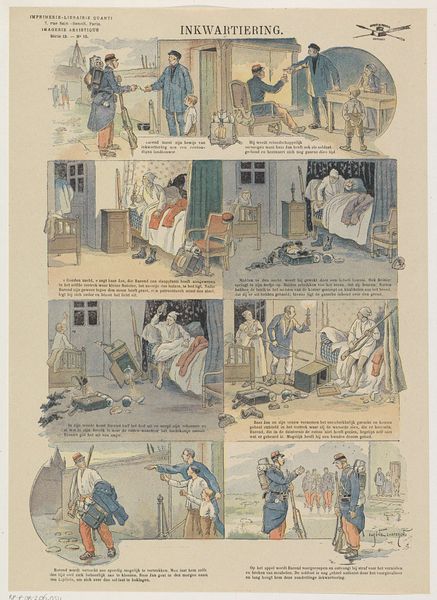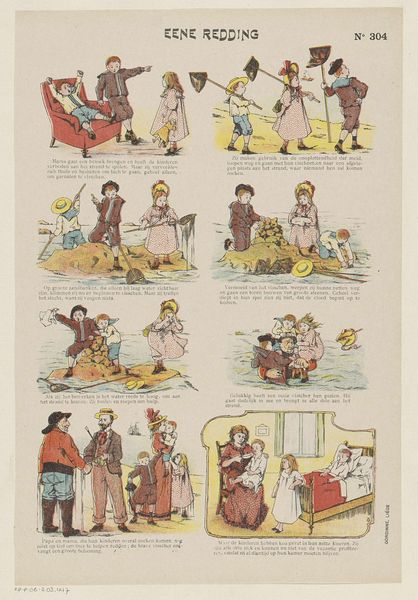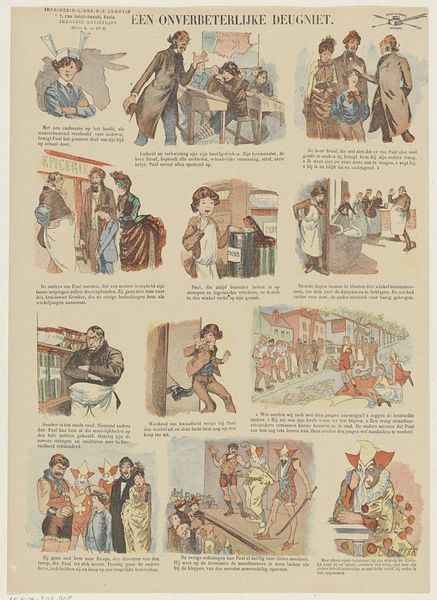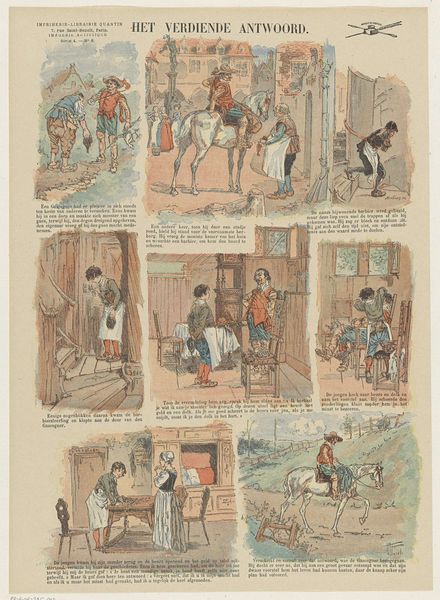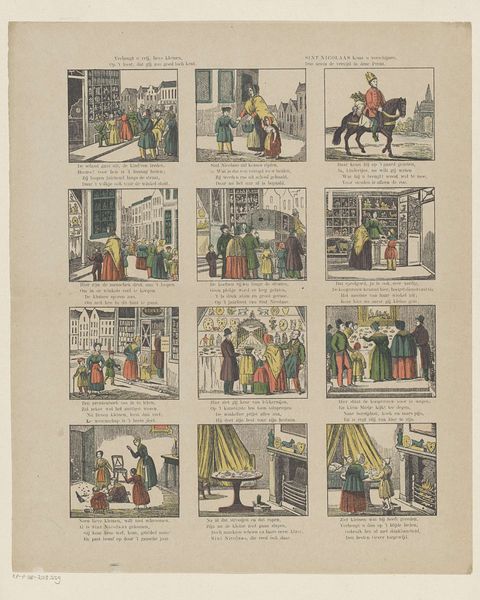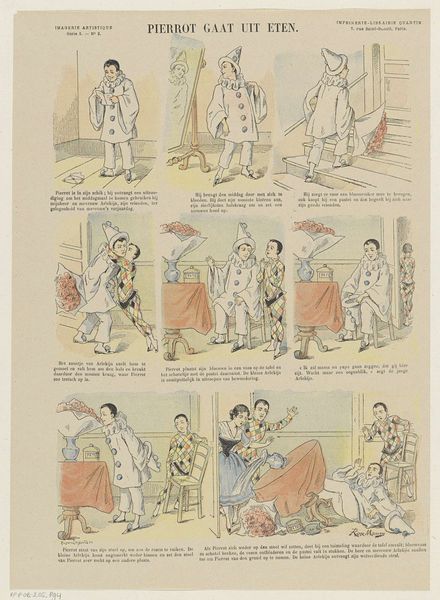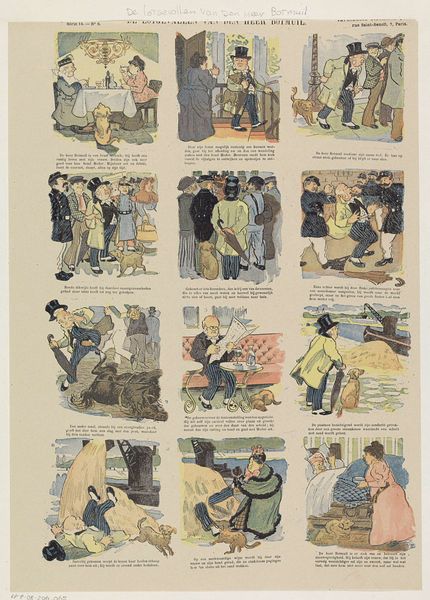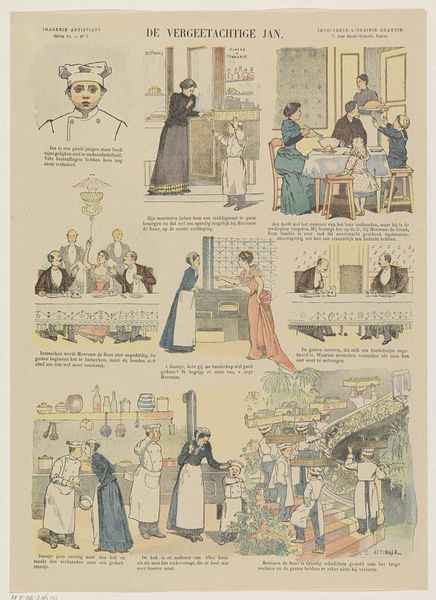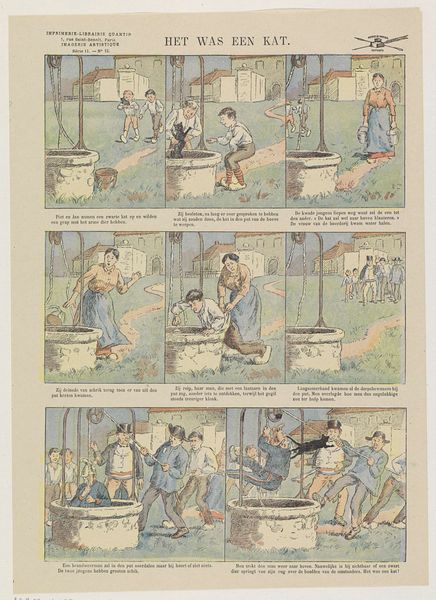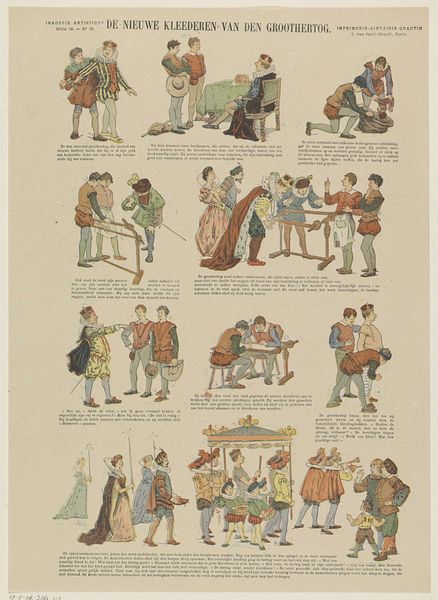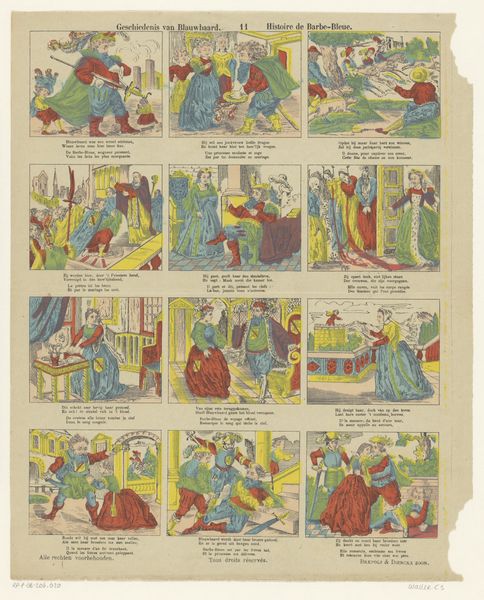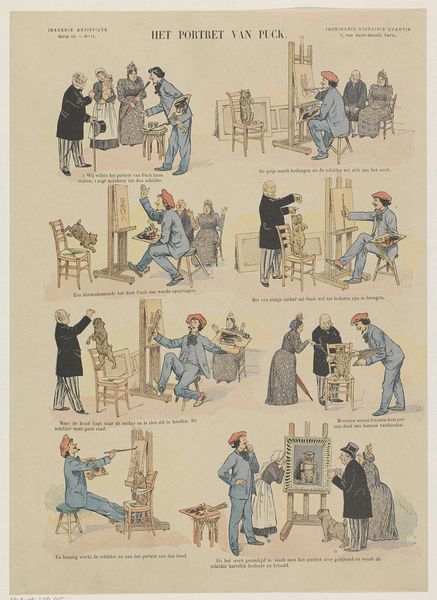
lithograph, print
#
comic strip
#
lithograph
# print
#
dog
#
comic
#
genre-painting
Dimensions: height 367 mm, width 265 mm
Copyright: Rijks Museum: Open Domain
Curator: Welcome. We’re standing before a lithograph entitled "Een leelijke grap," which translates to "An Ugly Joke." The work was produced by Paul Albert Steck sometime between 1876 and 1897. Steck was, of course, working in a time when printmaking was experiencing something of a resurgence, particularly within commercial applications. Editor: It feels like a storyboard from a forgotten silent film. Each panel, framed almost like windows, tells a tiny, self-contained story—but they all string together, creating this sense of build, this slow burn of…well, of an ugly joke! Curator: Absolutely. Steck utilizes the format of a comic strip, something that was becoming increasingly popular at the time. But more than mere entertainment, it offered artists like Steck an accessible way to engage with societal observations—to use humor as a lens through which to view the world. Consider how consumerism is lampooned here, via these ridiculous piles of canned goods. Editor: Exactly! Stacks and stacks of tinned food that end up in complete disarray. It makes you think about abundance…but also the inherent ridiculousness of that excess. Also the dogs. I'm sort of fascinated by the little dog in each of the scenes. Is it a pet or more of a street mutt, running from scene to scene? Is the dog complicit in this prank? Curator: What I find compelling is how this comic also engages in a larger discourse concerning the rise of a merchant class and new urban spaces of trade and commerce in Europe. These were often portrayed—not necessarily accurately—as rife with deceit and scheming, and that these behaviors might permeate all facets of social exchange. It’s social commentary, really. Editor: Absolutely. But back to this comic-strip construction… I find the format does create a lovely visual rhythm, where your eye bounces back and forth between these little moments of everyday life. Curator: Indeed, and the subtle variations in color from frame to frame provide a quiet dynamism to the experience. It asks a great deal of its viewers. It begs viewers to make these subtle inferences. To engage with a narrative unfolding in six vignettes. A skill in critical thinking! Editor: Yes! Paul Albert Steck's “An Ugly Joke” leaves us with more questions than answers. The enduring power of humor in exposing societal foibles continues to provoke dialogue and consideration today. Curator: Well put! We do hope that by observing Paul Albert Steck’s composition today, and dissecting the cultural moment that birthed it, one comes to recognize its significance.
Comments
No comments
Be the first to comment and join the conversation on the ultimate creative platform.
